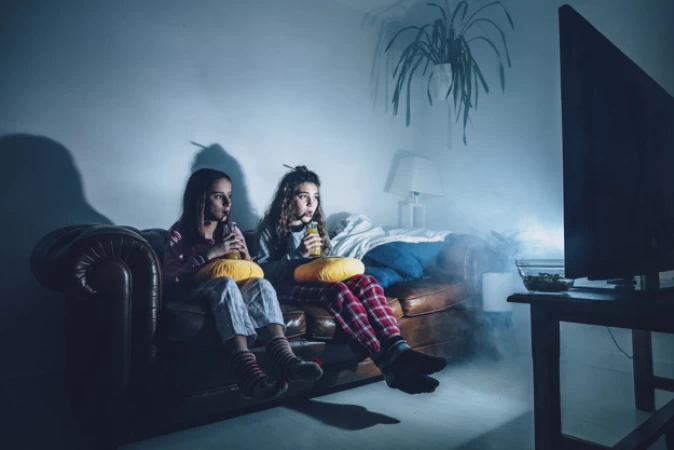Before starting this article I want to mention you guys about Du Home Internet I personally use it and its super-fast internet connection with many exciting packages also they offer really awesome Du Tv Packages and you can visit their website for more info. well, let's start our topic.
The case is that it is said that it is not good to be with the television (or the computer monitor) in the dark. That's right?. And because?
Well, it is true, it is not good to see a screen in a room without light, although watching TV in the dark will not leave us blind, nor does it cause permanent injuries or irreversible visual losses.
And why is it bad? Because we cheat our eyes. I explain myself: the eye is a well-designed organ, and there are very effective mechanisms to adapt to light and darkness. The two main mechanisms are:
1. The iris. What really gives the color of the eyes is a diaphragm that regulates the amount of light that enters our sensitive retina. In normal circumstances, we live with a lot of light around us, and the iris is rather closed, that is, the pupil (the girl), which is the hole through which the light enters, is tiny. Enough light enters for us to see well, but not excessive for it to damage the retina. In circumstances of great darkness, the iris opens, the pupil becomes very large and the little light that can reach the eye is used to see. If we remember the animal documentaries, the eyes of the night owls are black, that is, the very large pupil.
2. The retina. It is the most sensitive and delicate part of the eye, there are millions of light receptors (such as tiny photoelectric cells). In an earlier article I explained the types of cells there are, and I put photographs. But the important thing now is to emphasize that these receptors are dynamic and adapt to our living conditions. If we live in brightly lit media, the receivers lower their sensitivity because excess brightness can be harmful. In situations of gloom, the retina receptors change their metabolism to increase this sensitivity. After 10 minutes of total darkness, a noticeable increase in sensitivity is already beginning, that is, a small visual stimulus that was previously invisible, after 10 minutes in the dark, we see it. But this adaptation to darkness is exponential,
We become almost owls
So we have these 2 adaptation mechanisms. If we are in an environment with medium luminosity it is sufficient to maintain the conditions that are called "photopic", that is, with an abundance of light. In other words, a rather small pupil and retina with low sensitivity.
As soon as we turn off the light, the adaptation to the "scotopic" environment begins, that is, to the darkness. If at that moment we put ourselves in front of a TV or a monitor, we receive some rays of light in the center of vision that attenuates our adaptation to the darkness.
But here is the trick: adaptation to light or darkness depends above all on the amount of our visual field that is illuminated. Where the light comes from (the center or the sides) or that it is a more or less intense light (the screens give intense lights) is less important.
That is, although we are concentrated in the center of vision, where the TV or monitor is, and we see it very bright, the rest of our field of vision is dark. And we have more field of vision than we think, about 180º, and the TV can occupy us no more than 20-30º.
Therefore, our brain believes that we are almost dark even though we are focused on the screen and we see it very bright. And by believing that we are in the dark, our brain commands the eyes to adapt to the darkness. The pupil dilates and the retina begins to increase sensitivity. Thus the central part of the retina, the one we really use to see, is receiving a lot of light from the screen, and because of this "wrong" adaptation to the dark, it receives even more light. This central part, which is called the macula, is precisely the most sensitive and delicate, and when you receive too much light you get tired.
That is what ultimately occurs, visual fatigue, fatigue, and in some cases symptoms of the type of headache, tearing and blurred vision.
How do we solve it? Simple, with turning on a small light, indirect lighting even if it is dim, enough. That indirect light practically goes unnoticed, but gently illuminates our entire peripheral field of vision, the pupil closes and the retina adapts again to the light. We do not realize, we see the same, but we may get less tired.
In the night driving something similar happens, the little road that lights with the headlights has an intense light, and the rest of the visual field is dark. It is normal for the eyes to get tired when driving at night, but here we cannot solve it. Turning on a light inside the car would relax the vision, but by decreasing sensitivity, we see the road worse, so we should not do it.


